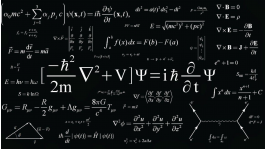The economic reforms under way in Russia since the early 1990s have caused overall economic restructuring and, more specifically, institutional shifts. Of special interest are the changes in the structure of distribution of economic agents as a result of the emergence of new types of such agents. We are referring to joint ventures and foreign companies, small business, and state–run business.
It is these three categories of economic agents that merit close scrutiny. Among them, foreign companies and joint ventures, which were the first to join the market, have existed the longest. Slightly “younger” is small business, which came into being in 1991, and as for the concept of state-run business, it is a very recent one. Statistics have tracked the changes, but so far there has been no systemic macroeconomic analysis of the operation of these economic agents.
The Russian economy is currently in a peculiar, semi–transitional state: many processes have stabilized and reached maturity, while others are still evolving. In this context, what can be said about the new types of economic agents and their contribution to Russia’s economic potential? How efficient are they, what are their weaknesses and their development prospects?
General scheme of analysis of the development of economic agents
To find correct answers to these questions, analysis should be conducted with relative figures. This approach alone can ensure that all the indicators are comparable both in terms of their dynamics and within the framework of the examined types of economic agents.
Eight indicators were identified as basic development characteristics of joint ventures and foreign companies, and five, of small business. The number of indicators may be increased, but all of them must have more or less equal “weight.” What is more, an excessively broad range of particular, insignificant characteristics would complicate analysis.
Of special note is integrated evaluation of the contribution of the different categories of economic agents. Since it can be made on the basis of several equal indicators, I shall use averaging, which, despite its obviously artificial character, is used by researchers throughout the world.
One of the most revealing links in the analysis is evaluation of the size of the agents, that is, the number of their employees. This aspect, which is often overlooked, is very important, because the dynamic of this indicator reveals many trends in a company’s operation.
The use of this informational–analytical scheme gives a full enough impression of the object of analysis and makes it possible to draw interesting conclusions concerning the rules of the Russian transition economy’s growth. In addition, tracing the retrospective dynamics of the main indicators has also applied significance as a first step toward elementary prognostic evaluations. The latter can be made by extrapolating the revealed trends, as well as expert assessment of the situation at the turning points of economic development. Two types of extrapolation can be identified. The first is trend extrapolation of the values of concrete indicators, and the second is sliding, annual extrapolation, that is, applying the trends of the previous year to the next one. This method implies annual “renovation” of both the trends themselves and of the initial data, which reduces the degree of error. I believe this is the most productive practical evaluation method.
Development trends in joint ventures and foreign companies
The first more or less accurate information about the existence of foreign business and joint ventures appeared in 1990. The main indicators recording their role in Russian economic development are presented in Table 1. They show that their contribution to the country’s GDP was not large: even in 1995, it was under 3%. It is noteworthy that it was highest in 1993, and then began to decline. The 3% level is probably what is to be expected for now, and is unlikely to rise in the next few years.
Table 1. Indicators of operation of joint ventures and foreign companies
|
Indicators |
1990 |
1991 |
1992 |
1993 |
1994 |
1995 |
|
Share of output in GDP, % |
0.5 |
1.3 |
2.4 |
2.9 |
2.2 |
2.8 |
|
Share of investments into fixed capital in the overall investment volume, % |
– |
– |
– |
0.0 |
1.7 |
2.7 |
|
Share of output sold on the domestic market, % |
78.1 |
61.1 |
37.9 |
50.9 |
90.4 |
96.3 |
|
Share of the staff in the overall number of employed, % |
0.1 |
0.2 |
0.3 |
0.4 |
0.5 |
0.6 |
|
Share of foreign trade turnover in overall foreign trade turnover, % |
1.0 |
1.6 |
4.0 |
5.9 |
6.9 |
7.2 |
|
Ratio between average labor productivity at joint ventures and foreign companies and that in the national economy, times |
5.6 |
6.8 |
8.7 |
6.7 |
4.3 |
4.5 |
|
Ratio between foreign trade efficiency at joint ventures and foreign companies and in the economy generally, % |
29.3 |
78.8 |
73.4 |
88.4 |
102.7 |
101.0 |
|
Average size of company, persons |
106.5 |
111.9 |
77.0 |
47.8 |
30.9 |
29.3 |
Calculated from [1].
In the meantime, back in the early 1990s, the cost of output of foreign branches of transnational corporations reached 6% of the world’s GDP [2], which can provide a reference point when evaluating the contribution these agents could be making to the Russian economy. Considering that this indicator shows a steady growth trend everywhere in the world (in the early 1980s, it was only 2% [2]), one may safely say that joint ventures and foreign business on the territory of Russia have not yet fully realized their potential.
Nor did the “aliens” show high investment activity. In the first years of their existence, their investment potential was too low for the Russian economy to even feel their presence. Only by the mid–1990s, the share of investments into fixed capital in the overall volume of capital investments reached a macroeconomic value. At present, they have approximately the same production investment capacity as Russia’s other economic agents. Serious changes in this sphere are unlikely; the parity can be expected to continue.
In the sense of the amount of labor involved, foreign business and joint ventures have not distinguished themselves either. By 1996, they accounted for only 0.6% of employment in the Russian economy. This does not affect the country’s job market in one way or another. And since some of the staff are foreigners, this business cannot be regarded as a serious source of jobs.
Table 1 makes it possible to trace the main trends and stages in the establishment of joint ventures and foreign companies. The most striking fact is that labor productivity there is much higher than the country’s average. Two phases are easy to identify: before 1992, the gap was increasing to their advantage, and then it began to close. At the outset of reforms, foreign companies and joint ventures were in the front ranks as regards labor productivity. Although this resource is already largely exhausted, for most Russian legal entities, they are still an example to be emulated.
How can one explain such evolution? Initially, the sweat labor system proved more productive than the much more relaxed routine at the other enterprises. As for the turnabout in the dynamics of relative labor productivity, it occurred because, first, the native market mechanism with its rigidly fixed labor relations went into action; second, the management of foreign companies and joint ventures became more “Russian” and, therefore, less exacting.
It is also important that these economic agents operated mainly on Russian consumer markets. They had been oriented toward outside markets in the early 1990s; this tendency persisted up to 1992. However, after the turnabout of 1993, they began to cater predominantly to domestic consumption (on Russia’s territory).
It is curious that the trends in the dynamics of relative labor productivity and the share of produce sold in the domestic market closely correlate. For example, at the time when joint ventures and foreign companies tried to sell their products abroad, their relative labor productivity was rising, while it was falling as they began to deal on the domestic market. This implies that, although more accessible, Russian consumer markets are less financially attractive for such businesses.
The most important aspect of the operation of joint ventures and foreign companies is the foreign economic one. This is what gives them an edge over the other legal entities. Look at the growth of their foreign trade turnover in the country’s overall foreign trade: since 1990, it increased from 1.0 to 7.2%. From the macroeconomic viewpoint, this contribution of international capital to Russia’s foreign economic potential is certainly significant. The scale of export and import operations reflects the role they perform in the Russian economy, that of catalysts of foreign trade.
The progress in foreign economic activity of joint ventures and foreign companies is also confirmed by other statistics. Specifically, throughout the reporting period, their foreign trade balance became increasingly more active: exports grew, exceeding the volume of imports more and more. An assessment of the relative efficiency of foreign trade operations shows that the start–up period lasted through 1993, after which the efficiency of export–import operations exceeded the average figure, albeit not very significantly.
Another noteworthy trend is a decrease in the size of joint ventures and foreign companies, which is contrary to the logic of international development. The average number of employees there dropped 3.8 times between 1991 and 1995. In other words, in most cases, we have “production dwarfs.” This is surprising, since foreign companies are usually branches of major transnationals and, consequently, can themselves be expected to be quite large. This is even more the case with joint ventures that are formed as a result of mergers of domestic and foreign capital; this automatically implies a respectable size. This trend is all the more puzzling since, throughout their existence, the average staff of joint ventures and foreign companies was smaller than in the Russian economy generally: in 1994, by 78%; and in 1996, by 17.7%. Assuming that they were to act as the vanguard of Russia’s industry, the situation appears even more unsatisfactory: in 1990, their size was 7.3% smaller than the country’s average, and in 1993 and 1995, 3.8 and four times, respectively. As A. Karavanskii justly notes, an absolute majority of joint ventures do not have enough capital for efficient business based on advanced technologies, and foreign participation in the Russian economy is “risk capital,” as a result of which mainly small businesses are set up [3].
The decrease in the size of foreign companies and joint ventures went hand in hand with what was happening to Russian companies. While in 1980, industrial enterprises had an average staff of 895.5, in 1985, 878.1, and in 1990, 780.6, in 1992 this figure fell to 727.7 and, in 1995, to 116.8 (calculated from [1]). Thus, the operation of “alien” economic units obeys the general inner laws of economic development of the host country. This conclusion is a good addendum to the well–known thesis which says that the scale of operation of foreign investments depends on the scale of domestic investments, which is fully applicable to Russia in the transition period [4].
An integrated assessment of the contribution of joint ventures and foreign companies to Russian economic development can use a standard procedure for averaging the principal scale indicators. The following characteristic should, I believe, be used: the share of output (A), employment (B), capital investments (C), and foreign trade turnover (D) of foreign companies and joint ventures expressed in relevant national economic terms. Then, the synthetic indicator S can be calculated under the formula
S = (A + В + С + D)/4 (1)
The aggregate contribution of foreign companies and joint ventures to the country’s economy was, in 1995, only 3.3%, which is inadequate even by the most liberal standards (I said above that the “normal” figure would be 6–7%).
So joint ventures and foreign companies in Russia were established and developed largely spontaneously and, on the whole, did not justify the hopes pinned on them. The absence of a well–considered strategy and a tactic of “production internationalization” of the Russian economy and the government’s inability to build a favorable environment discouraged the most serious and valuable foreign partners who could help create centers of business activity.
One of the conceptual trends in the development of foreign companies and joint ventures on Russia’s territory should be a campaign against “dwarfness.” Large up–to–date economic units alone would be able to accomplish what the country’s economy needs. Steps aimed at increasing the size of such businesses are varied and are known well enough. We should not hesitate to take them.
Small business development trends
Information about the progress of small business in Russia is inadequate, often too scant to make year–to–year comparisons. Only since 1991 can it be regarded as representative enough. My attempt to make such a comparison is presented in Table 2, which clearly shows the main trends in the evolution of small business in Russia.
Table 2. Indicators of operation of small business
|
Indicators |
1991 |
1992 |
1993* |
1994 |
1995 |
|
Share of output in GDP, % |
4.4 |
4.1 |
13.5 |
22.9 |
24.9 |
|
Share of the staff in overall number of employed, % |
1.6 |
2.9 |
7.8 |
12.4 |
13.3 |
|
Share of investments into fixed capital in the overall investment volume, % |
– |
– |
– |
6.3 |
10.5 |
|
Ratio of average labor productivity in small business to that in the national economy, times |
2.8 |
1.4 |
1.6 |
1.8 |
1.9 |
|
Average size of company, number of persons |
17.1 |
14.3 |
12.0 |
9.8 |
10.0 |
Calculated from [1, 5, 6].
* The author’s estimates for 1993 were obtained through linear interpolation.
Over the five years of its existence, small business has made a tremendous leap in terms of both production scope and the volume of involved resources. In 1995, small companies produced one–quarter of the country’s GDP, had one–eighth of the employed on their payroll, and accounted for one–tenth of the national capital investments. For all these indicators, they reached a macroeconomic level, and this justifies regarding them as a national economic institution in their own right.
However, as Table 2 shows, the contribution of small business differs significantly depending on the economic field. This is, above all, due to the higher labor productivity of small companies as compared to the other economic agents. Maximum relative productivity was recorded at the dawn of small business, in 1991, when a gap (slowly but surely bridged over the following years) was formed. By 1995, labor efficiency in small business was almost double the country’s average.
One should not, however, make too much of this. The thing is that small business widely uses contract labor, and this complicates the transfer of statistics into relevant indicators. The number of people employed in small business is most probably understated. What is more, many companies formally falling into the category of small business use the services of a vast number of people who do not appear on their balance sheets at all. The shadow economy, which has reached a very large scale in Russia, is especially “efficient” in small companies, which, being highly flexible, do most of their business bypassing official records. The shift in the parity of labor productivity to the advantage of small enterprises is also promoted by the fact that large production structures still practice the hiring of “dead souls.”
The main bottleneck in the operation of small business is investments. The indicator of the share of capital investments is the last in the range of indicators under consideration, which is, of course, only natural, since small companies seldom have an opportunity to implement major investment projects.
We see that small business performs a dual role. On one hand, promptly filling the market with goods and services and therefore shaping an up–to–date infrastructure, it is very useful in the short term; in the long–term, however, it may become a reason for investment passivity which could stunt the country’s economic growth.
It should be admitted for the sake of fairness that the share of capital investments of small business tends to grow. This is only to be expected after the initial start–up period, when long–term investments amounted practically to zero. It is, however, questionable how long this trend will continue.
To make an integrated estimate of the contribution of small business to economic growth, let us use the weighted mean indicator S, which presents a convolution of the share of output (A), employees (B), and capital investments (C), expressed by the corresponding national economic indicators. In this case, the synthetic indicator S is calculated with the help of the formula
S = (A + В + C)/3 (2)
The aggregate contribution of small business to the country’s economy was, in 1995, 16.2%, which is almost five times higher than that of joint ventures and foreign companies over the same period. In other words, one–sixth of Russia’s overall national economic potential is concentrated in small business.
The evolution of the average size of small companies merits special notice. In just a few years, from 1992 to 1995, it almost halved. Obviously, basic industries and research-intensive and high–tech branches cannot advance within the framework of these dystrophic economic units.
As an economic phenomenon, small business emerged in a favorable environment and was in complete accord with the spirit of the time. However, this institution is disappearing slowly but surely. The very concept of small business is degenerating not only because the criteria that put a company in this category are largely a convention, but also because any average company in Russia is, in fact, a specimen of small business. What is more, the relative gap in the size of small and other economic units is gradually closing. While in 1994, a small business was almost 5.6 times smaller than the average statistical one, in 1995, this figure was 3.5 times smaller.
The sphere of efficient operation of small business is very narrow, and its impact is on the wane both in terms of scope and efficiency. The rapid growth of small companies is also becoming inexpedient for macroeconomic reasons, undermining as it does the country’s investment opportunities. The very concept of small business should be revised and made uniform for all industries. And, finally, the maximum size of a small business should not exceed that of the average statistical legal entity. The latter criterion is especially important, as, in 1995, these two indicators were already at odds.
As for the third type of economic agent mentioned in the beginning of this article (it has a short history), state–run business, it merits a separate study, which will be undertaken in one of the next issues of the journal.
References
1. Rossiiskii statisticheskii ezhegodnik (Yearbook of Russian Statistics), Moscow: Logos, 1996.
2. Chebanov S.V. Foreign Investments: Trends of the 1990s, Mirovaya ekonomika i mezhdunarodnye otnosheniya, 1997, no. 3.
3. Karavanskii A.V. Inostrannye investitsii i sovmestnoe predprinimatel’stvo v perekhodnyi period (Foreign Investments and Joint Ventures during the Transition Period), Moscow: Ekonomicheskaya akademiya, 1994, p. 24.
4. Afanas’ev M.Yu. Attracting Foreign Investment to Western Siberia, Synopsis of dissertation, Cand. Sci. (Econ.), Moscow, 1996, p. 21.
5. Maloe predprinimatel’stvo v Rossii v 1994 g. (Small Business in Russia in 1994), Moscow, 1995.
6. Maloe predprinimatel’stvo v Rossii v 1995 g. (Small Business in Russia in 1995), Moscow, 1996.
Official link to the article:
Balatskii E.V. Small Business, Joint Ventures, and Foreign Companies in the Russian Transition Economy// «Herald of the Russian Academy of Sciences», Vol. 68, No. 1, 1998, pp. 7–11.









